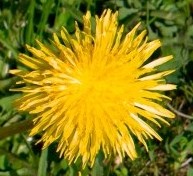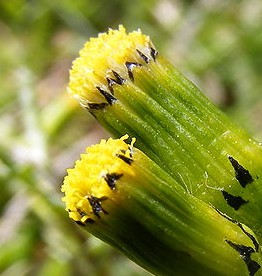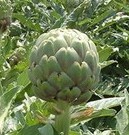
The Sunflower Family is one of the largest families of flowering plants, second only to the Orchid family. Unlike orchids, the sunflower family is found in both tropical and non-tropical environments. It has 23,000 species in 1,620 genera organized into 12 subfamilies. Although most are herbaceous, a significant number are shrubs or trees. It includes vegetables such as lettuce, endive and artichoke, herbs such as chamomile, tansy and santolina, ornaments like marigolds, zinnias and chrysanthemums, and weeds like dandelions, ragweed and thistles. The botanical names for the family are Asteraceae, after the most dominant genus, and Compositae, a reference to the nature of the flower head.
The identifying characteristics of the Sunflower family are:
 A flower head consisting of many small flowers. Members of the sunflower family have numerous small flowers clustered into a head that looks like a single flower.
A flower head consisting of many small flowers. Members of the sunflower family have numerous small flowers clustered into a head that looks like a single flower.
The flowers are of two different types; outer petal-like ray flowers that may lack stamens and pistils so be infertile, and disc flowers that make up the center of the flower head. A flower may have only disc flowers, only ray flowers or both.
 The daisies and black eyed Susans shown above have white or golden ray flowers and golden yellow or dark brown disc flowers. A dandelion, however, only has ray flowers.
The daisies and black eyed Susans shown above have white or golden ray flowers and golden yellow or dark brown disc flowers. A dandelion, however, only has ray flowers.

Common groundsel has only disc flowers.

 Bracts, modified leaves that resemble sepals, often appear in multiple layers at the base of the flowerhead resembling a calyx. An artichoke has bracts that protect the flowerhead.
Bracts, modified leaves that resemble sepals, often appear in multiple layers at the base of the flowerhead resembling a calyx. An artichoke has bracts that protect the flowerhead.

Other interesting members of the Sunflower Family are: yarrow, bachelor button, pearly everlasting, Joy Pye weed, gay feather (Liatris), coneflower, sneezeweed, blanket flower (Gaillarda), tickseed (Coreopsis), and goldenrod.
